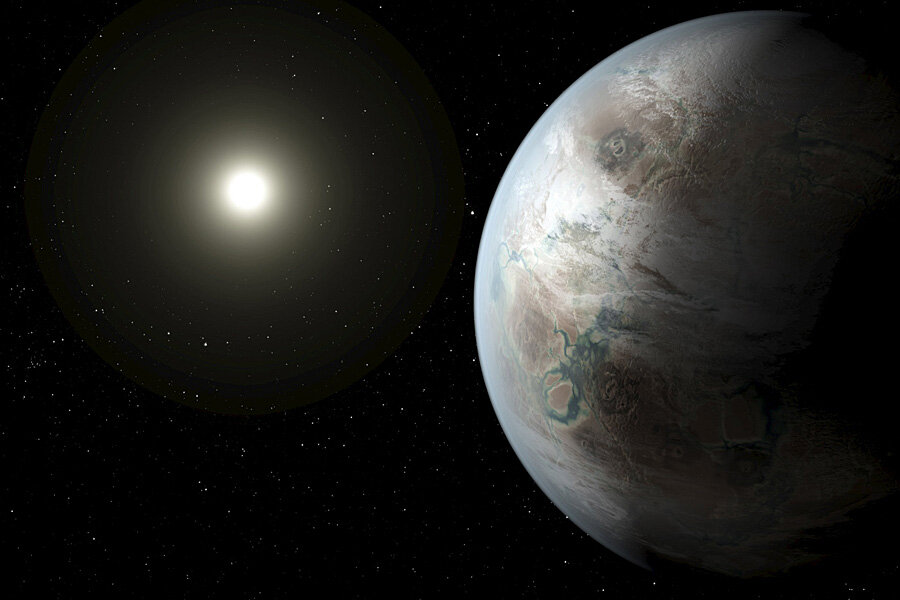NASA estimates 1 billion 'Earths' in our galaxy. Why so many?
Loading...
NASA announced Thursday that the Kepler Space Telescope had discovered Earth’s “older, bigger cousin.” Now, calculations from NASA scientist Natalie Batalha estimate that there could potentially be one billion habitable planets, according to The Washington Post.
Earth's "cousin," Kepler-452b, is estimated to be 1.6 times the size of Earth, and is most likely rocky, according to NASA.
However, this remarkable discovery could be just one of the billion of Earth-like planets in our solar system. But why so many?
Previous estimates have indicated that 15 to 25 percent of stars in the universe might be home to potentially habitable planets, according to Ms. Batalha. There are about 100 billion stars, so given those estimates, there might be up to 14 billion habitable planets. However, ‘only’ one billion of these planets orbit class-G stars, which are similar to Earth’s sun.
The size of our solar neighborhood includes all planets up to 33 light-years away. Considering the distance of a light year is six trillion miles, these planets would take a great deal of time to reach. At this time, the distance of the observable universe is 13.8 billion light years, although some scientists have predicted that the universe may be infinitely large, according to SPACE.com contributor Nola Taylor Redd.
"So? Where is everybody?"
That is the question which was supposedly posed by Italian physicist Enrico Fermi in the 1940s. The question later became known as the Fermi Paradox, which highlights the contradiction between the number of potentially habitable planets which could theoretically sustain life, and the fact that no inhabitants of these planets have yet come to Earth. A vast number of theories have been formulated in response to this conundrum, none of which have been substantially proven.
However, there are current plans in the works for inhabiting planets much closer to Earth, including the NASA-planned manned mission to Mars. The mission is set to leave sometime in the 2030s, as outlined by the 2010 US National Space Policy. It’s NASA’s goal within this decade to embark on the Mars 2020 mission, which would place a sophisticated rover on the red planet in five years.








